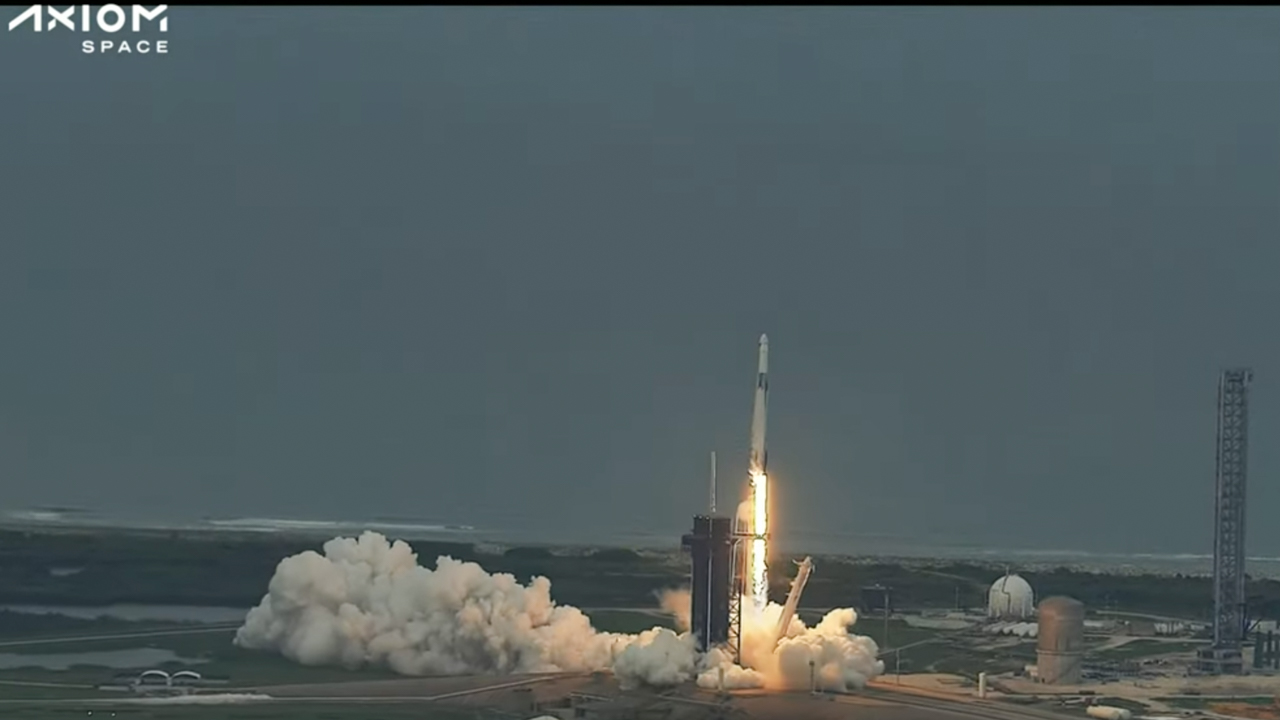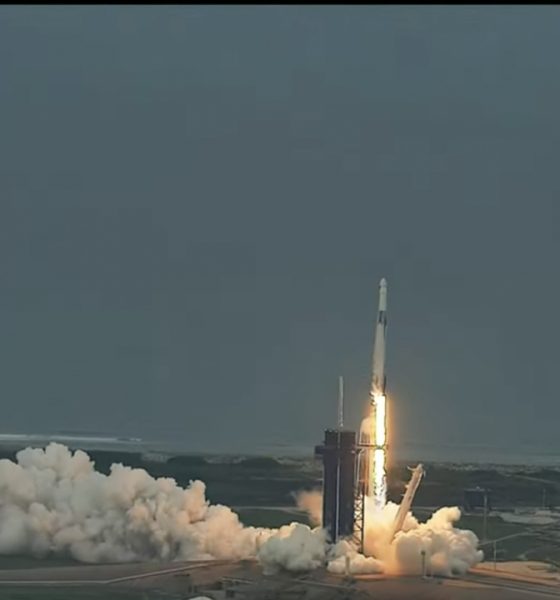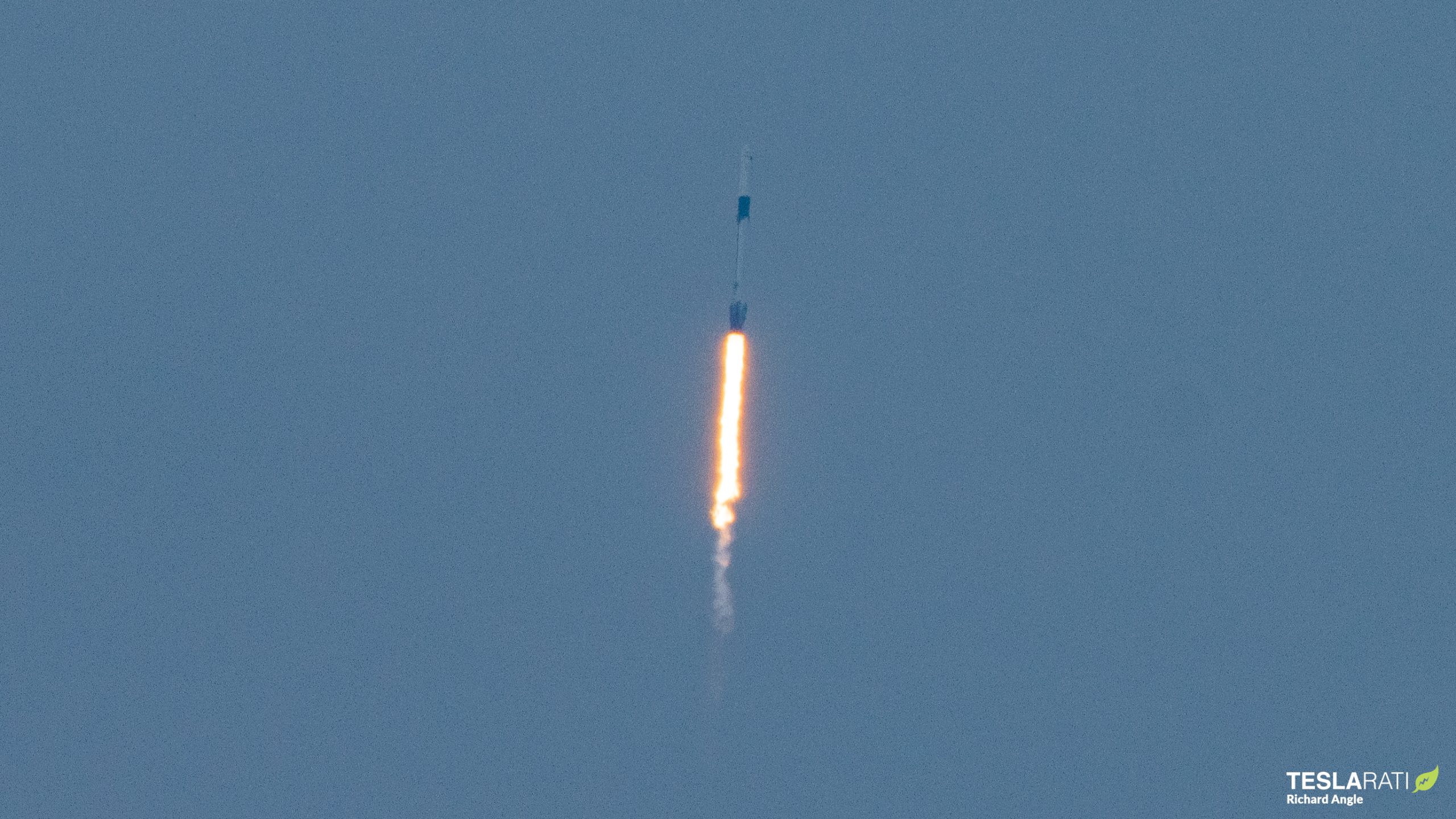

News
The Axiom-2 mission heads to the International Space Station courtesy of SpaceX
The Axiom-2 mission is heading to the International Space System after a launch earlier this evening, courtesy of SpaceX.
As it launched at 5:37 PM ET, the SpaceX Falcon 9 with Crew Dragon Freedom lifted off from LC-39A at Kennedy Space Center. This is the 2nd mission for Crew Dragon Freedom, previously supporting the Crew-4 launch in April 2022.
Liftoff of Ax-2! pic.twitter.com/YS3SDuStNy
— SpaceX (@SpaceX) May 21, 2023
Axiom-2 consists of 4 astronauts, Commander Peggy Whitson, a retired NASA Astronaut and now Director of Human Space Flight for Axiom Space, has spent 665 days in space, including numerous spacewalks while living aboard the International Space Station. The designated pilot for this mission is John Shofner, an American race car driver and pilot, who paid for his seat.
There are two Mission Specialists flying as well. First is Rayyanah Barnawi, who holds a bachelor’s degree in biomedical research and is the first Saudi female Astronaut. Flying alongside her is Ali AlQarni, who also holds a bachelor’s in aeronautical sciences and is a Captain in Royal Saudi Air Force. The Saudi Space Commission paid for both seats.

B1080 flying through hazy conditions to successfully send AX-2 to the ISS (Richard Angle)
It is estimated that the cost for each seat is roughly $55 million, this includes the ride to space, food, and using the facilities aboard the International Space Station.
The 4 crew members will spend 8 days aboard the orbiting outpost conducting numerous experiments and media outreach. Originally the mission was to be ten days, but due to the scheduling of supply missions to the International Space Station, the mission was shortened to 8 days. The crew is expected to arrive at the International Space Station roughly 16 hours after launch from Kennedy Space Center, where they will be greeted by the 7 current astronauts and cosmonauts living aboard the ISS.
This launch also was the first time a Falcon 9 performed a Return to Launch Site (RTLS) for a Crewed mission. Thanks to their numerous Starlink launches, SpaceX has been able to show the Falcon 9 has the capabilities to complete the RTLS safely, which will also help with a quicker turnaround time for the boosters used on Crew and Resupply missions to the ISS.
Falcon 9’s first stage booster has landed on Landing Zone 1, a first for a human spaceflight mission pic.twitter.com/VhjpruRbMC
— SpaceX (@SpaceX) May 21, 2023
The first stage that completed this flight is a rookie amongst the Falcon 9 fleet, B1080, completing its first flight. It may have showed a few nerves at first, with a small leak in its attitude control system that is used during the landing sequence of its flight. However, the leak proved to not be an issue, as B1080 performed a perfect landing at LZ-1 at Cape Canaveral Air Force Station.
Following their stay aboard the ISS, the Crew disembark and make a fiery plunge through the atmosphere with a parachute-assisted landing off of the Florida coast.
Questions or comments? Shoot me an email @ rangle1555@gmail.com, or Tweet me @RDAnglePhoto.

News
Tesla (TSLA) receives “Buy” rating and $551 PT from Canaccord Genuity
He also maintained a “Buy” rating for TSLA stock over the company’s improving long-term outlook, which is driven by autonomy and robotics.

Canaccord Genuity analyst George Gianarikas raised his Tesla (NASDAQ:TSLA) price target from $482 to $551. He also maintained a “Buy” rating for TSLA stock over the company’s improving long-term outlook, which is driven by autonomy and robotics.
The analyst’s updated note
Gianarikas lowered his 4Q25 delivery estimates but pointed to several positive factors in the Tesla story. He noted that EV adoption in emerging markets is gaining pace, and progress in FSD and the Robotaxi rollout in 2026 represent major upside drivers. Further progress in the Optimus program next year could also add more momentum for the electric vehicle maker.
“Overall, yes, 4Q25 delivery expectations are being revised lower. However, the reset in the US EV market is laying the groundwork for a more durable and attractive long-term demand environment.
“At the same time, EV penetration in emerging markets is accelerating, reinforcing Tesla’s potential multi‑year growth runway beyond the US. Global progress in FSD and the anticipated rollout of a larger robotaxi fleet in 2026 are increasingly important components of the Tesla equity story and could provide sentiment tailwinds,” the analyst wrote.
Tesla’s busy 2026
The upcoming year would be a busy one for Tesla, considering the company’s plans and targets. The autonomous two-seat Cybercab has been confirmed to start production sometime in Q2 2026, as per Elon Musk during the 2025 Annual Shareholder Meeting.
Apart from this, Tesla is also expected to unveil the next-generation Roadster on April 1, 2026. Tesla is also expected to start high-volume production of the Tesla Semi in Nevada next year.
Apart from vehicle launches, Tesla has expressed its intentions to significantly ramp the rollout of FSD to several regions worldwide, such as Europe. Plans are also underway to launch more Robotaxi networks in several more key areas across the United States.
News
Waymo sues Santa Monica over order to halt overnight charging sessions
In its complaint, Waymo argued that its self-driving cars’ operations do not constitute a public nuisance, and compliance with the city’s order would cause the company irreparable harm.

Waymo has filed a lawsuit against the City of Santa Monica in Los Angeles County Superior Court, seeking to block an order that requires the company to cease overnight charging at two facilities.
In its complaint, Waymo argued that its self-driving cars’ operations do not constitute a public nuisance, and compliance with the city’s order would cause the company irreparable harm.
Nuisance claims
As noted in a report from the Los Angeles Times, Waymo’s two charging sites at Euclid Street and Broadway have operated for about a year, supporting the company’s growing fleet with round-the-clock activity. Unfortunately, this has also resulted in residents in the area reportedly being unable to sleep due to incessant beeping from self-driving taxis that are moving in and out of the charging stations around the clock.
Frustrated residents have protested against the Waymos by blocking the vehicles’ paths, placing cones, and “stacking” cars to create backups. This has also resulted in multiple calls to the police.
Last month, the city issued an order to Waymo and its charging partner, Voltera, to cease overnight operations at the charging locations, stating that the self-driving vehicles’ activities at night were a public nuisance. A December 15 meeting yielded no agreement on mitigations like software rerouting. Waymo proposed changes, but the city reportedly insisted that nothing would satisfy the irate residents.
“We are disappointed that the City has chosen an adversarial path over a collaborative one. The City’s position has been to insist that no actions taken or proposed by Waymo would satisfy the complaining neighbors and therefore must be deemed insufficient,” a Waymo spokesperson stated.
Waymo pushes back
In its legal complaint, Waymo stated that its “activities at the Broadway Facilities do not constitute a public nuisance.” The company also noted that it “faces imminent and irreparable harm to its operations, employees, and customers” from the city’s order. The suit also stated that the city was fully aware that the Voltera charging sites would be operating around the clock to support Waymo’s self-driving taxis.
The company highlighted over one million trips in Santa Monica since launch, with more than 50,000 rides starting or ending there in November alone. Waymo also criticized the city for adopting a contentious strategy against businesses.
“The City of Santa Monica’s recent actions are inconsistent with its stated goal of attracting investment. At a time when the City faces a serious fiscal crisis, officials are choosing to obstruct properly permitted investment rather than fostering a ‘ready for business’ environment,” Waymo stated.
News
Tesla FSD v14.2.2 is getting rave reviews from drivers
So far, early testers have reported buttery-smooth drives with confident performance, even at night or on twisty roads.

Tesla Full Self-Driving (Supervised) v14.2.2 is receiving positive reviews from owners, with several drivers praising the build’s lack of hesitation during lane changes and its smoother decision-making, among others.
The update, which started rolling out on Monday, also adds features like dynamic arrival pin adjustment. So far, early testers have reported buttery-smooth drives with confident performance, even at night or on twisty roads.
Owners highlight major improvements
Longtime Tesla owner and FSD user @BLKMDL3 shared a detailed 10-hour impression of FSD v14.2.2, noting that the system exhibited “zero lane change hesitation” and “extremely refined” lane choices. He praised Mad Max mode’s performance, stellar parking in locations including ticket dispensers, and impressive canyon runs even in dark conditions.
Fellow FSD user Dan Burkland reported an hour of FSD v14.2.2’s nighttime driving with “zero hesitations” and “buttery smooth” confidence reminiscent of Robotaxi rides in areas such as Austin, Texas. Veteran FSD user Whole Mars Catalog also demonstrated voice navigation via Grok, while Tesla owner Devin Olsen completed a nearly two-hour drive with FSD v14.2.2 in heavy traffic and rain with strong performance.
Closer to unsupervised
FSD has been receiving rave reviews, even from Tesla’s competitors. Xpeng CEO He Xiaopeng, for one, offered fresh praise for FSD v14.2 after visiting Silicon Valley. Following extended test drives of Tesla vehicles running the latest FSD software, He stated that the system has made major strides, reinforcing his view that Tesla’s approach to autonomy is indeed the proper path towards autonomy.
According to He, Tesla’s FSD has evolved from a smooth Level 2 advanced driver assistance system into what he described as a “near-Level 4” experience in terms of capabilities. While acknowledging that areas of improvement are still present, the Xpeng CEO stated that FSD’s current iteration significantly surpasses last year’s capabilities. He also reiterated his belief that Tesla’s strategy of using the same autonomous software and hardware architecture across private vehicles and robotaxis is the right long-term approach, as it would allow users to bypass intermediate autonomy stages and move closer to Level 4 functionality.








